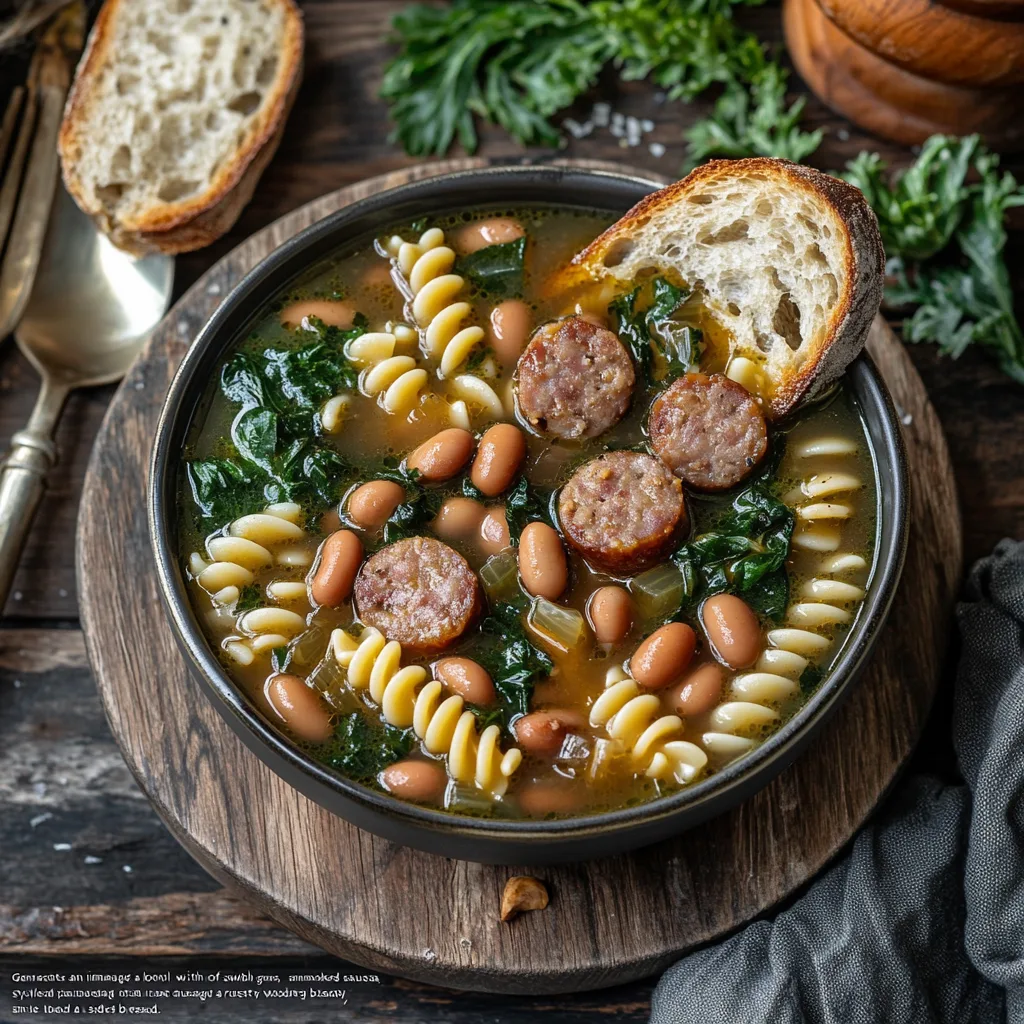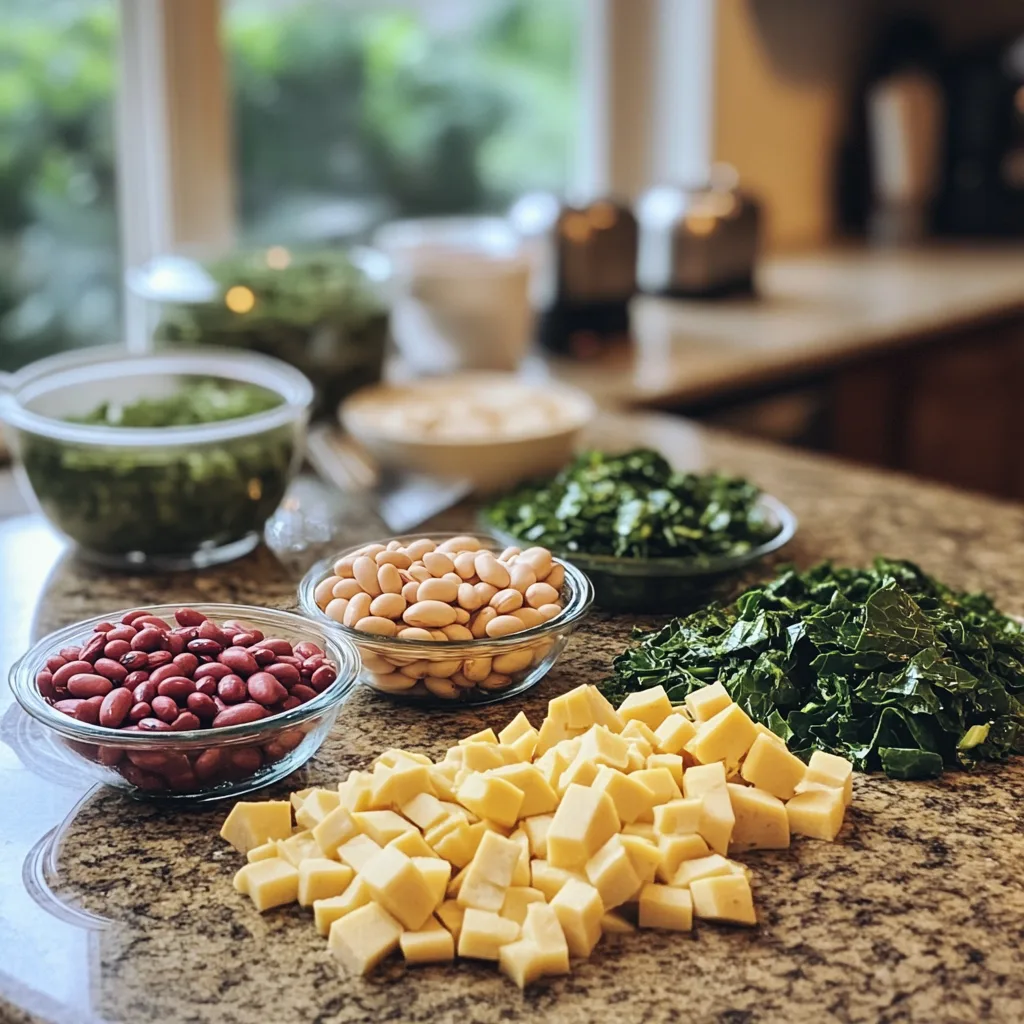When the chill of winter settles in, there’s nothing quite like a hearty, flavorful dish to warm you up. Enter swamp soup, a quintessential Southern comfort food that boasts a delightful medley of greens, beans, smoked sausage, and pasta. Its name may sound quirky, but this rustic soup offers a perfect blend of textures and flavors that make it a crowd favorite. Whether you’re seeking an easy weeknight dinner or a cozy weekend meal, swamp soup delivers.
In this article, we’ll dive deep into everything you need to know about this beloved dish—from its origins and key ingredients to step-by-step preparation tips and nutritional benefits. Let’s get started with an introduction to this soulful soup.
For more comforting recipes, check out Soup Bone Recipe, a classic option for hearty meals.
Introduction to Swamp Soup
What is Swamp Soup?
Swamp soup is a hearty Southern dish that combines robust ingredients into a single, satisfying bowl. It’s a blend of tender greens, creamy white beans, smoky sausage, and small pasta, all simmered in a flavorful broth. The result? A warming meal that’s as comforting as it is nourishing.
The name “swamp soup” comes from its appearance—dark greens floating in a rich, brothy base, reminiscent of a swamp. But don’t let the name fool you. This dish is a treasure trove of Southern flavors and a staple in many households during colder months.
Curious about other hearty options? Visit Best Beef Bone Soup Recipe for inspiration.
Origins and Regional Popularity
Though its exact origins remain unclear, swamp soup is a beloved recipe in the Southern United States, particularly in regions with abundant greens like turnip or collard greens. It reflects the essence of Southern cooking—simple, affordable ingredients appreciate with bold, smoky flavors.
Over the years, this dish has gained popularity beyond the South, thanks to its adaptability and ease of preparation. Whether you’re a seasoned cook or a kitchen novice, swamp soup invites you to enjoy the charm of home-cooked Southern meals with every spoonful.
Ingredients Overview
Essential Ingredients for Swamp Soup
The heart of any great swamp soup lies in its ingredients. This soulful dish brings together simple yet flavorful elements to create a comforting bowl of goodness. Key components include:
- Greens: Turnip greens are the most traditional choice, but other hearty greens like collard greens, kale, or Swiss chard work just as well. These greens lend the soup its signature “swampy” appearance and earthy flavor.
- White Beans: Creamy beans like cannellini, navy, or Great Northern beans add texture and a boost of protein, making the dish hearty and satisfying.
- Smoked Sausage: Andouille or kielbasa is the go-to sausage for its smoky richness. This ingredient not only
- appreciate the flavor but also infuses the broth with a savory depth.
- Pasta: Small pasta shapes like ditalini or orzo make the soup more filling while complementing the other ingredients.
- Broth and Tomatoes: A base of chicken broth, paired with crushed or diced tomatoes, creates a balanced mix of tangy and savory notes.
These simple pantry staples come together to form a dish that’s greater than the sum of its parts.
The Role of Smoked Sausage in Flavor Profile
The smoked sausage in swamp soup plays a pivotal role. Its rich, smoky flavor permeates the entire dish, elevating the other ingredients. When sautéed with aromatics like garlic, onion, and celery, the sausage releases oils that coat the vegetables, enhancing their natural sweetness. For vegetarians or those looking to switch things up, plant-based sausage can be an excellent substitute while retaining the smoky essence.
Alternative Ingredients: Customizing the Recipe
The beauty of swamp soup lies in its versatility. Add diced carrots, bell peppers, or even sweet potatoes for extra color and nutrients. For a vegan twist, swap out the sausage and chicken broth for plant-based alternatives while keeping the greens and beans front and center.
Step-by-Step Recipe Guide
Preparing the Greens and Aromatics
Start by trimming and chopping your greens. If you’re using turnip greens, remove the tough stems and finely dice them. Then, wash the leaves thoroughly and set them aside. In a large pot, heat olive oil over medium heat. Sauté diced onion, celery, and the chopped greens’ stems until softened. Add minced garlic and cook until fragrant, making sure not to burn it.
Cooking the Base with Beans and Broth
Once the aromatics are softened, stir in your diced smoked sausage and let it brown slightly. This step intensifies the flavor as the sausage releases its oils. Next, add drained and rinsed white beans, a can of crushed or diced tomatoes, and chicken broth. For extra flavor, you can add a splash of water or even a bay leaf. Bring the mixture to a gentle simmer and allow it to cook for about 10 minutes.
Incorporating Pasta and Final Touches
To finish your swamp soup, stir in your choice of small pasta and the prepared greens. Allow the soup to simmer until the pasta is tender and the greens have wilted to perfection. Be sure to stir occasionally to prevent the pasta from sticking to the bottom.
Once the soup is ready, taste and adjust the seasoning with salt and freshly ground black pepper. For a fresh pop of flavor, sprinkle chopped parsley over the top before serving. Pair the soup with a slice of crusty bread or a simple green salad, and enjoy!
Nutritional Benefits and Variations
Health Benefits of Key Ingredients
Swamp soup isn’t just delicious—it’s packed with nutrients that make it a wholesome meal option. The dark leafy greens, like turnip or collard greens, are brimming with vitamins A, C, and K, as well as calcium and iron. These nutrients support bone health, immunity, and overall well-being.
White beans, another key ingredient, are an excellent source of plant-based protein and fiber, promoting digestive health and keeping you full longer. Additionally, they provide essential minerals like potassium and magnesium, which aid in heart health.
The smoked sausage brings protein and robust flavor, but it’s a good idea to balance it with plenty of greens to make the dish more nutritious. For those watching their sodium intake, consider using a reduced-sodium chicken broth or seasoning sparingly.
Recipe Variations: Vegan and Gluten-Free Options
One of the greatest things about swamp soup is its adaptability. For a vegan version, simply swap the smoked sausage with plant-based sausage or smoked tofu and use vegetable broth instead of chicken broth.
To make it gluten-free, select a gluten-free pasta or omit the pasta entirely and increase the beans for a thicker texture. You could also experiment with quinoa or rice as a hearty alternative.
For more recipes that cater to dietary preferences,
Cultural and Seasonal Relevance
Swamp Soup as a Southern Comfort Food
Swamp soup embodies the spirit of Southern cooking: simple ingredients transformed into something truly special. Historically, the recipe reflects the resourcefulness of Southern households, utilizing accessible ingredients like greens and beans to create a hearty, satisfying meal.
Today, the dish is a staple in Southern kitchens, often served during gatherings or as a comforting family meal. Its smoky, savory flavor makes it a favorite for anyone seeking that “down-home” taste.
Why It’s a Perfect Winter Dish
There’s no denying that swamp soup is at its best during the cold winter months. Its warm, brothy base, paired with hearty greens and sausage, offers the kind of meal that soothes you from the inside out. It’s easy to make in large batches, which makes it perfect for meal prepping or feeding a crowd during holiday gatherings.
Additionally, the versatility of swamp soup allows it to be enjoyed year-round. Swap out heavier ingredients like sausage for lighter ones in summer, and this dish transitions smooth through the seasons.
Expert Tips for the Perfect Swamp Soup
Cooking Tips for Better Flavor
Mastering swamp soup is all about layering flavors. To start, always sauté your aromatics—onions, celery, and garlic—before adding other ingredients. This step deepens the soup’s flavor base and establish the broth is rich and savory.
Smoked sausage, like kielbasa or andouille, should be browned before adding liquids. This releases its oils, infusing the soup with a smoky, hearty taste. Similarly, be sure to season each layer as you go, but be mindful of the saltiness of the broth and sausage.
Another pro tip: let the soup simmer for at least 15-20 minutes before adding the pasta and greens. This allows the flavors to meld beautifully, creating that irresistible “cooked-all-day” taste.
Storage and Reheating Advice
If you’ve made more swamp soup than you can finish in one sitting, don’t worry—it keeps wonderfully. Store leftovers in an airtight container in the fridge for up to three days. When reheating, add a splash of water or broth to thin it out, as the pasta tends to absorb liquid over time.
For long-term storage, freeze the soup without the pasta and greens. Add these fresh when reheating for the best texture and flavor.
FAQs About Swamp Soup
What is the Origin of the Name Swamp Soup?
The name “swamp soup” might sound odd at first, but it actually refers to the soup’s appearance. The dark, leafy greens floating in the broth resemble vegetation found in a swamp. Despite its unconventional name, this dish is packed with comforting flavors that make it a household favorite.
Can Swamp Soup Be Made in Advance?
Absolutely! Swamp soup is an excellent make-ahead meal. Its flavors deepen when it sits, so preparing it a day ahead often results in an even tastier dish. Just be sure to cook the pasta separately and add it when reheating to avoid it becoming mushy.
What Other Soups Are Similar to Swamp Soup?
If you enjoy the hearty, rustic appeal of swamp soup, you might also like dishes such as pasta e fagioli or kale and white bean soup. Both feature a similar combination of beans, greens, and flavorful broths. You can easily find variations of these recipes online or in Southern cookbooks.
Related Recipes and Pairings
Complementary Dishes to Serve with Swamp Soup
Swamp soup is a meal in itself, but pairing it with the right side dishes can take your dining experience to the next level. A crusty loaf of bread, like a baguette or cornbread, is perfect for soaking up the flavorful broth. For a lighter option, a simple green salad dressed with olive oil and lemon provides a refreshing contrast to the rich soup.
If you’re hosting, consider adding a Southern classic like deviled eggs or a side of roasted sweet potatoes to round out the menu. These options complement the smoky and savory notes of swamp soup beautifully.
Exploring Other Hearty Soup Recipes
If you’re a fan of comforting soups, you’ll enjoy experimenting with recipes like kale and sausage soup or a classic minestrone. These dishes share the heartiness and versatility of swamp soup, making them wonderful alternatives for weeknight dinners.
Conclusion and Final Thoughts
Why Swamp Soup Deserves a Place in Your Kitchen
There’s something magical about a dish that’s both simple and soul-warming, and swamp soup is just that. It’s more than just a recipe—it’s a celebration of Southern cooking and comfort food at its finest. Whether you’re seeking a hearty family dinner or a dish to impress guests, this soup delivers every time.
A Dish for All Seasons
Although swamp soup shines during the colder months, its adaptability establish you can enjoy it all year. Swap heavier ingredients for lighter ones in summer, or add seasonal vegetables for a fresh twist.
So why wait? Gather your ingredients, fire up the stove, and let the magic of swamp soup fill your home with warmth and flavor. For more recipe ideas and inspiration, check out other comforting classics on your favorite cooking websites or blogs.


